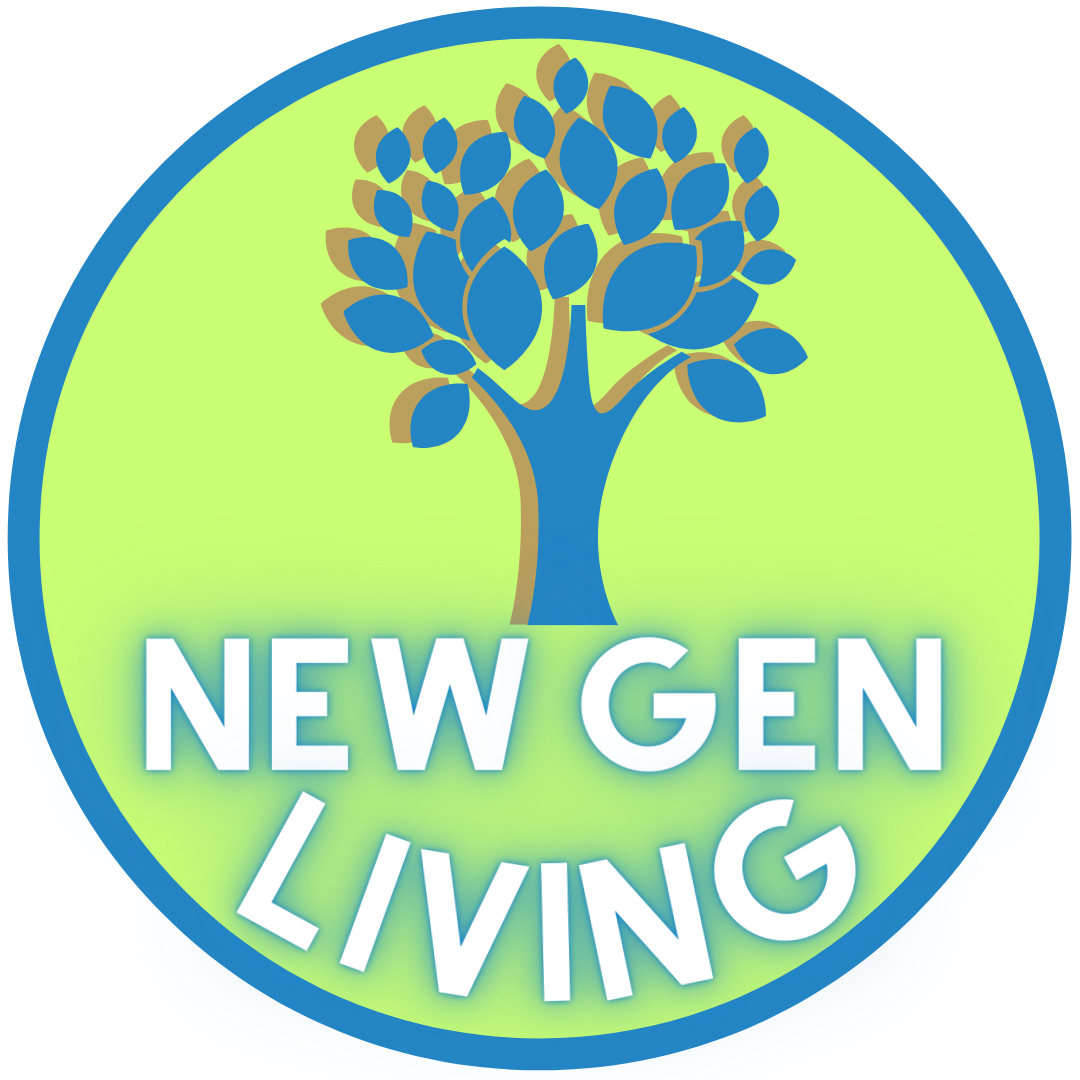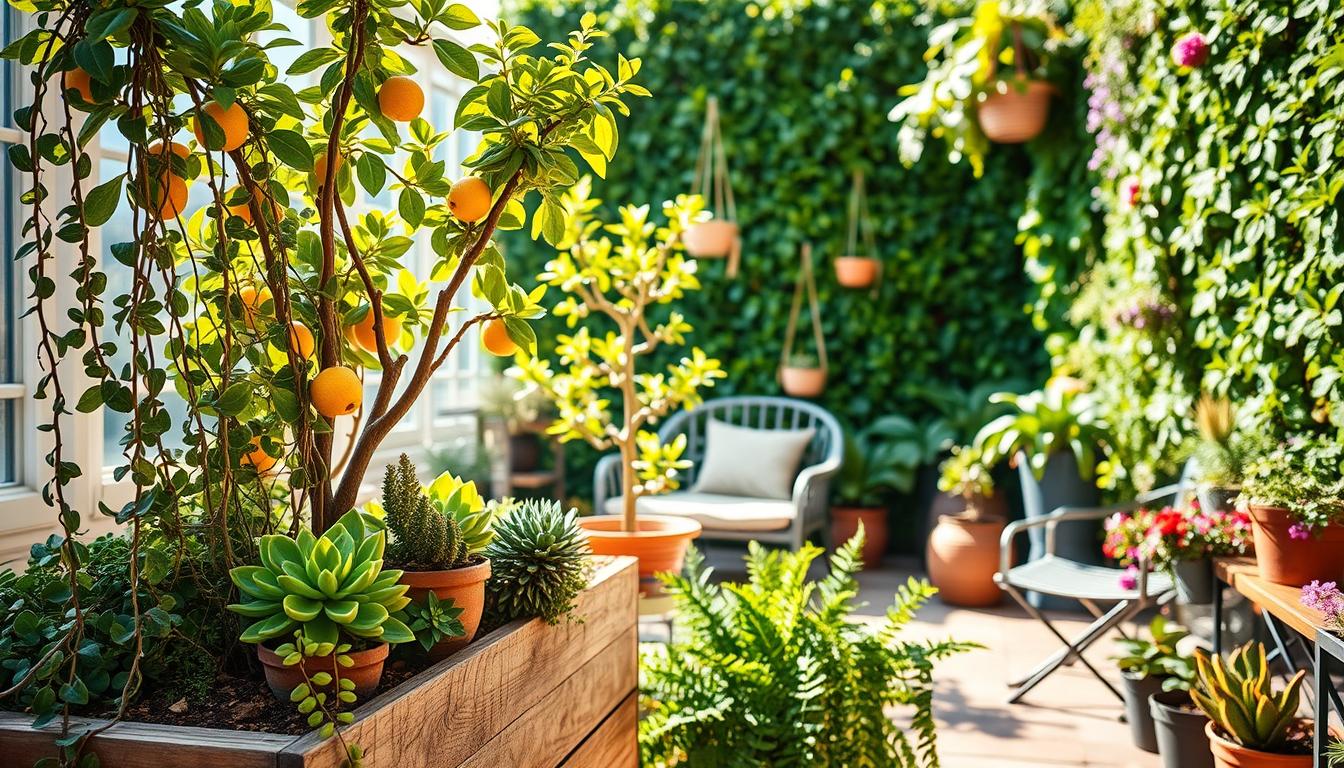Transforming a small space into a vibrant green retreat is easier than you think. With the right approach, even limited square footage can become a lush oasis. Container gardening offers a flexible solution for urban dwellers, allowing you to bring nature indoors or onto your balcony.
Nurturing plants in your living environment has psychological benefits, reducing stress and boosting mood. Starting with a few containers, as suggested by The Spruce, helps build skills gradually. This method is adaptable for city living, whether you have a balcony, rooftop, or windowsill.
Creating a green space in your home doesn’t require a lot of room. With careful planning and the right plants, you can enjoy the beauty and tranquility of nature. Let’s explore how to design a thriving green retreat in your small space.
Key Takeaways
- Transform small spaces into vibrant green retreats with the right approach.
- Container gardening is a flexible solution for urban living.
- Nurturing plants reduces stress and boosts mood.
- Start with a few containers to build skills gradually.
- Adaptable for balconies, rooftops, and windowsills.
Introduction to Apartment Gardening
Urban living doesn’t mean you have to give up on growing your own food. Modern apartment gardening goes beyond traditional houseplants, offering a creative way to cultivate edibles in small spaces. From herbs to vegetables, you can transform your balcony or windowsill into a productive green space.
The rise of urban food cultivation is reshaping how we think about limited areas. Studies from Clemson University highlight effective pest management and harvesting techniques, making it easier to maintain healthy plants. With the right approach, even compact spaces can yield impressive results.
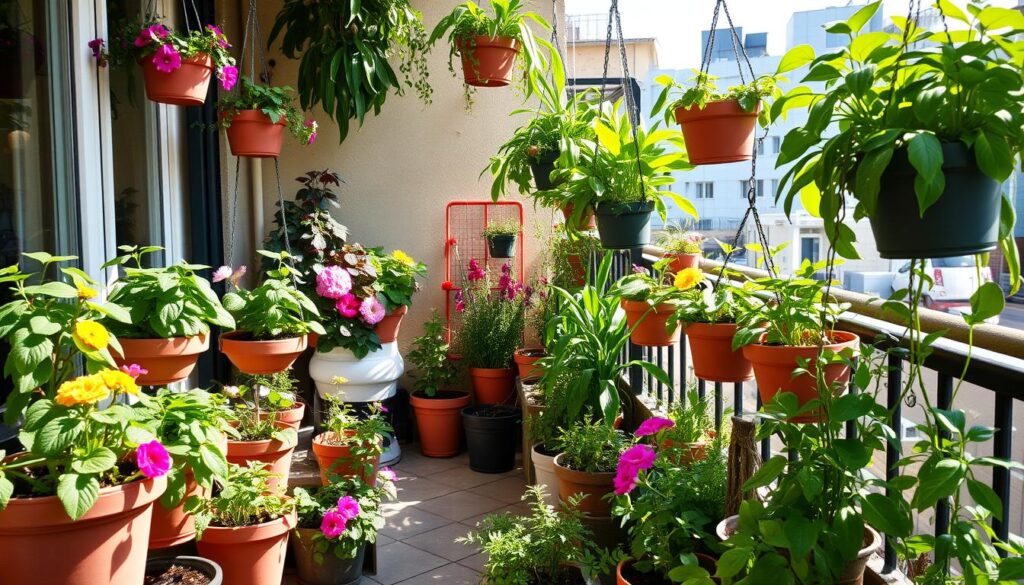
Surprising options like dwarf citrus trees and patio tomatoes are perfect for small-scale gardening. These plants thrive in containers and require minimal space, debunking the myth that productive gardens need large areas. With proper care, you can enjoy fresh produce year-round.
| Plant Type | Space Required | Care Level |
|---|---|---|
| Dwarf Citrus Trees | Small | Moderate |
| Patio Tomatoes | Compact | Easy |
| Herbs (Basil, Mint) | Minimal | Low |
Whether you’re a beginner or an experienced gardener, apartment gardening offers a rewarding way to connect with nature. With the right plants and techniques, you can create a thriving green space that fits your lifestyle.
Planning Your Apartment Garden
Designing a green retreat in limited areas starts with smart planning. Before diving into planting, take time to evaluate your space and understand its unique conditions. This ensures your plants thrive and your setup remains functional.
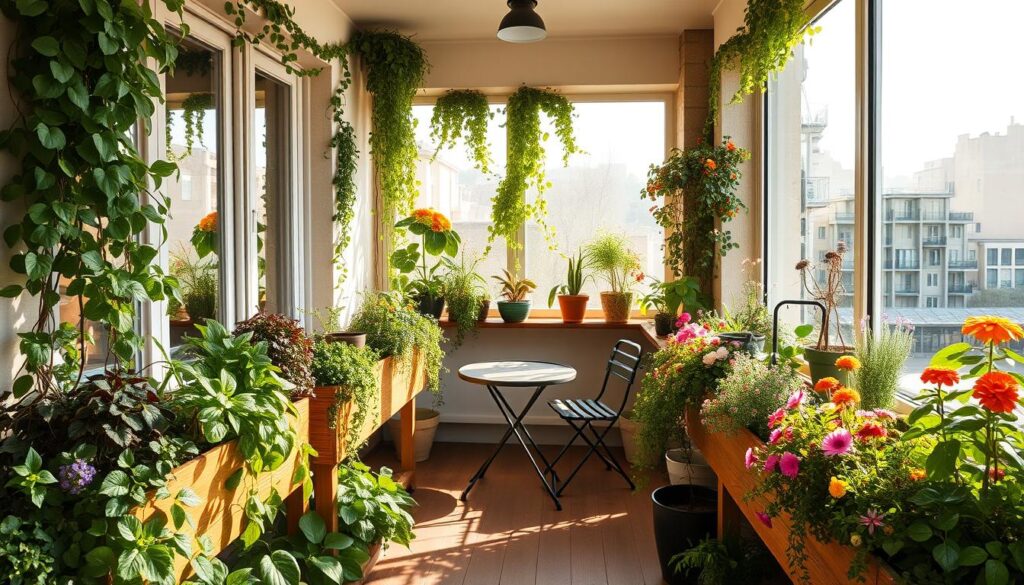
Assessing Your Space
Start by measuring your area. Whether it’s a balcony, rooftop, or windowsill, knowing the dimensions helps you choose the right containers and plants. Consider weight limits too—containers can triple in weight when wet, so ensure your structure can handle the load.
Wind can be a challenge in elevated spaces. Use adjustable screens or group plants together for protection. For humidity control, try pebble trays or compact humidifiers. These small adjustments make a big difference in plant health.
Understanding Light Requirements
Light is crucial for plant growth. Use sun mapping to track how much sun your space receives. Full sun means six or more hours of direct light, while partial sun is four to six hours. Areas with less than four hours are considered full shade.
Choose plants that match your light conditions. For example, herbs like basil thrive in full sun, while ferns prefer shade. This ensures your green retreat flourishes with minimal effort.
“A well-planned garden maximizes every inch of available space, turning limitations into opportunities.”
For inspiration, consider a case study where a 4’x6′ balcony was transformed into a tiered vertical garden. This approach not only saves space but also creates a visually stunning green oasis. Learn more about gardening for beginners to get started.
Choosing the Right Plants for Your Apartment Garden
Selecting the perfect plants can turn any small area into a thriving green haven. Whether you’re growing herbs, vegetables, or fruit, the right choices ensure your space stays vibrant and productive. Let’s explore the best options for your compact green retreat.
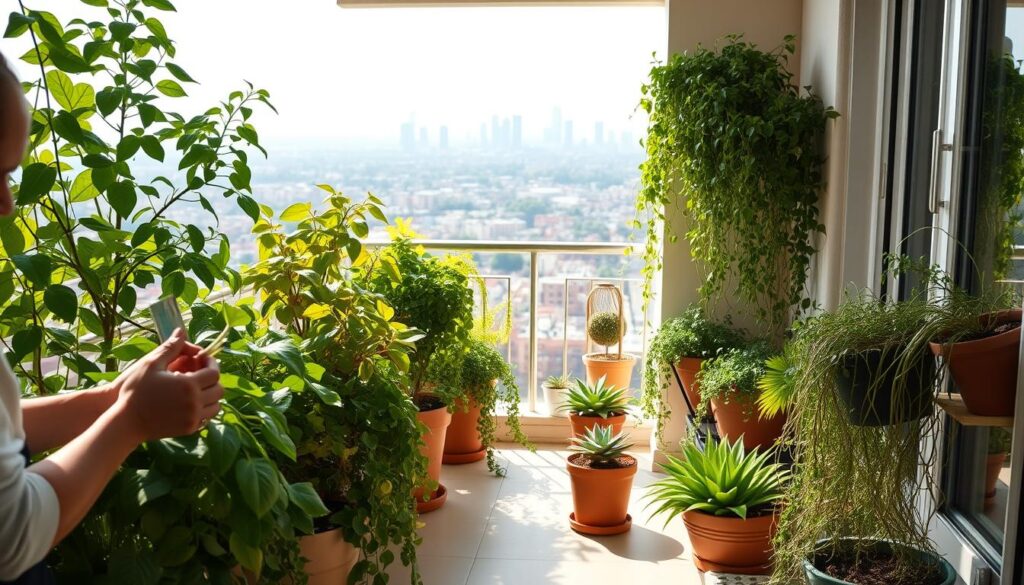
Herbs and Vegetables
Herbs are a great starting point for small spaces. Basil, with its Genovese and Thai varieties, thrives in containers and adds flavor to your meals. Perennial thyme and windowsill chives are also low-maintenance options.
For vegetables, consider space-efficient choices like ‘Tom Thumb’ lettuce, ‘Fairy Tale’ eggplant, and ‘Tiny Tim’ tomatoes. These plants grow well in compact areas and yield impressive results.
Fruits and Flowers
Dwarf fruit trees, such as dwarf Meyer lemon trees, are perfect for limited spaces. They need 6-8 hours of sunlight and thrive with proper humidity. For a pop of color, ‘Endless Summer’ hydrangeas adapt well to containers.
Don’t overlook unexpected edibles like alpine strawberries. They grow beautifully in hanging planters and add a sweet touch to your green space.
- Top-performing herbs: Basil, thyme, chives
- Space-efficient veggies: Lettuce, eggplant, tomatoes
- Flower power: Hydrangeas, butterfly bush
- Dwarf fruit showcase: Lemon trees, blueberry bushes
- Unexpected edibles: Alpine strawberries
Essential Tools and Supplies for Apartment Gardening
Equipping your green space with the right tools makes all the difference. Whether you’re a beginner or a seasoned gardener, having the right supply ensures your plants thrive. From lightweight pots to innovative watering systems, let’s explore the essentials.
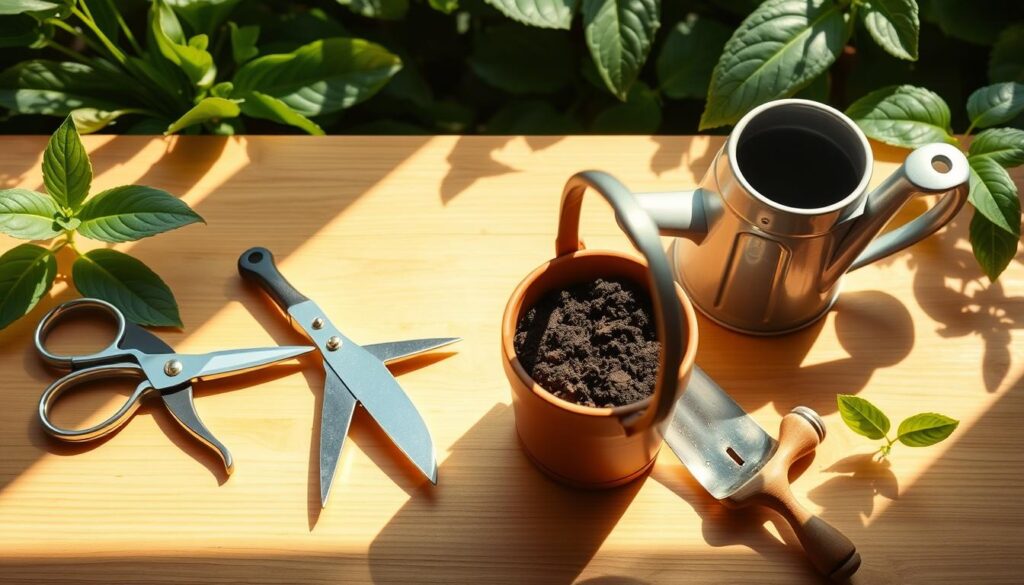
Start with lightweight options like self-watering planters and coir-based potting mix. These are perfect for small spaces, reducing the hassle of frequent maintenance. Coir-based mixes are eco-friendly and retain moisture well, making them ideal for urban setups.
Your toolkit should include essentials like soil scoops, pruning snips, and pH test strips. These tools help you monitor plant health and maintain optimal conditions. A soil scoop ensures precise planting, while pruning snips keep your plants tidy and healthy.
When choosing containers, consider materials like fabric, resin, and ceramic. Fabric pots offer excellent drainage, while resin is durable and lightweight. Ceramic adds a decorative touch but can be heavier. Choose based on your space and plant needs.
Understanding soil science is key. Use perlite in your potting mix to balance drainage and moisture retention. A 1:3 ratio of perlite to soil works well for most plants, ensuring they stay hydrated without becoming waterlogged.
Innovative watering systems like battery-operated drip kits and capillary mats simplify maintenance. Drip kits deliver water directly to the roots, while capillary mats provide consistent moisture. Both are great for busy gardeners.
For space-saving tools, try collapsible buckets and nesting measurement sets. These are easy to store and perfect for small areas. Trusted brands like Espoma for organic fertilizers and Fiskars for compact tools are excellent choices.
“The right tools not only make gardening easier but also more enjoyable.”
With these essentials, you’ll be well-equipped to create a thriving green retreat. Invest in quality tools and supplies, and watch your plants flourish.
Maintaining Your Apartment Garden
Keeping your green space healthy and thriving requires consistent care and attention. From watering to pest control, a little effort goes a long way in ensuring your plants stay vibrant and productive.
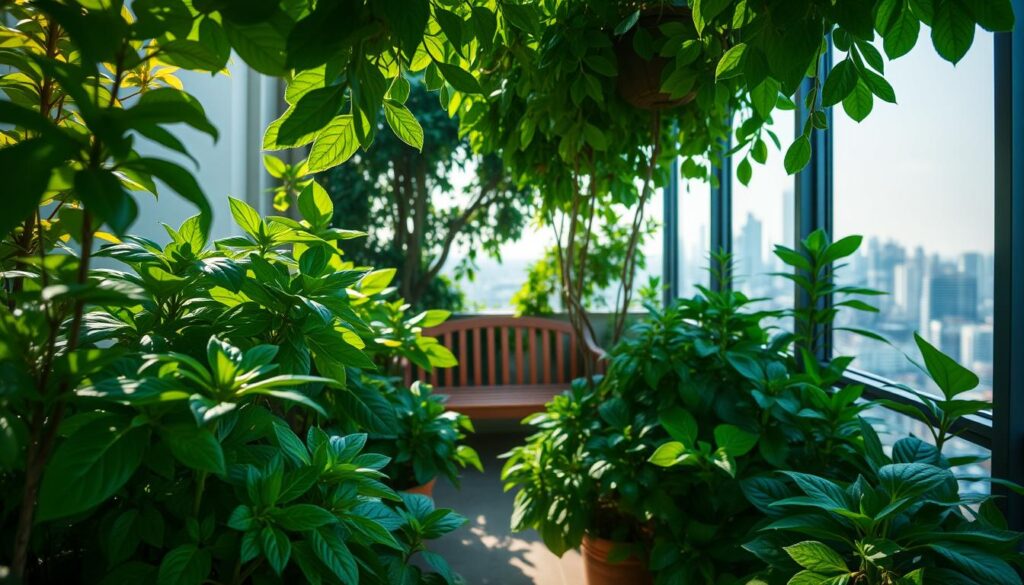
Watering and Feeding
Properly water plants to keep them hydrated without overdoing it. Use the finger test—check the soil 1-2 inches deep for dryness. If it feels dry, it’s time to water. For precision, consider moisture meters to avoid guesswork.
Feeding your plants is equally important. Use fertilizer like liquid seaweed for quick nutrient boosts or slow-release spikes for steady growth. Always follow the recommended schedule to avoid overfeeding, which can harm the roots.
Dealing with Pests and Diseases
Pests like spider mites, aphids, and fungus gnats can threaten your plants. Identify them early by inspecting the leaves and stems. For organic solutions, apply neem oil at dusk or introduce beneficial nematodes to combat infestations.
Disease prevention is key. Ensure proper air circulation using small USB fans to reduce humidity around your plants. If you spot infected plants, isolate them immediately to prevent spreading.
“Healthy plants start with consistent care and timely interventions.”
With these tips, your green space will remain a lush and thriving retreat. Regular maintenance ensures your plants stay healthy and beautiful, bringing joy to your home.
Conclusion
Even the smallest corners can bloom into thriving green spaces. With the right approach, you can transform a small space into a productive oasis. Seasonal planning ensures fresh food year-round, while community efforts like shared rooftop gardens bring neighbors together.
Remember, every day is a chance to learn and grow. Start small, experiment with different plants, and enjoy the journey. Share your successes on social media to inspire others and celebrate your green achievements!
